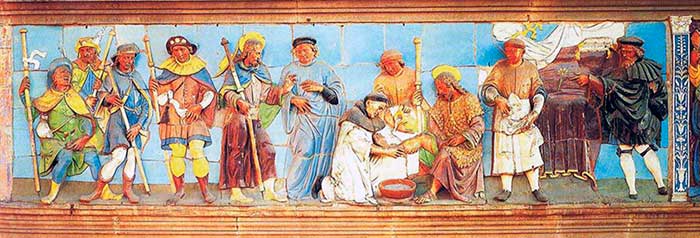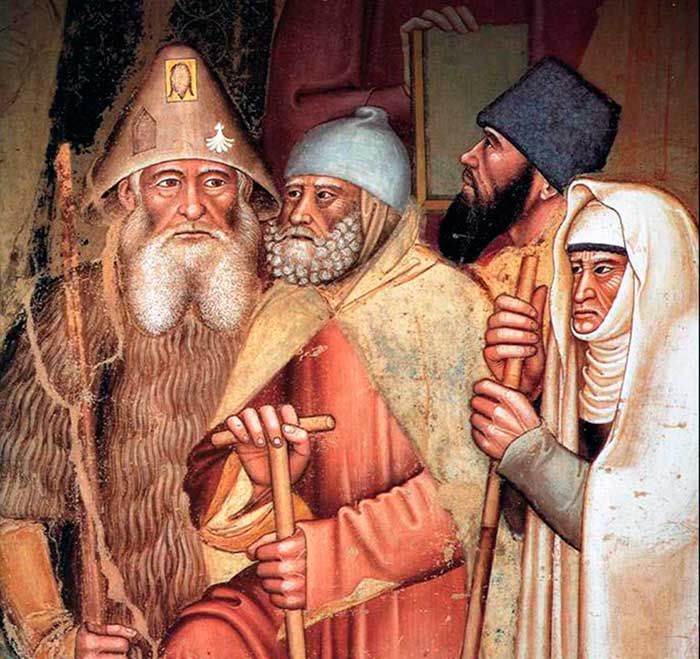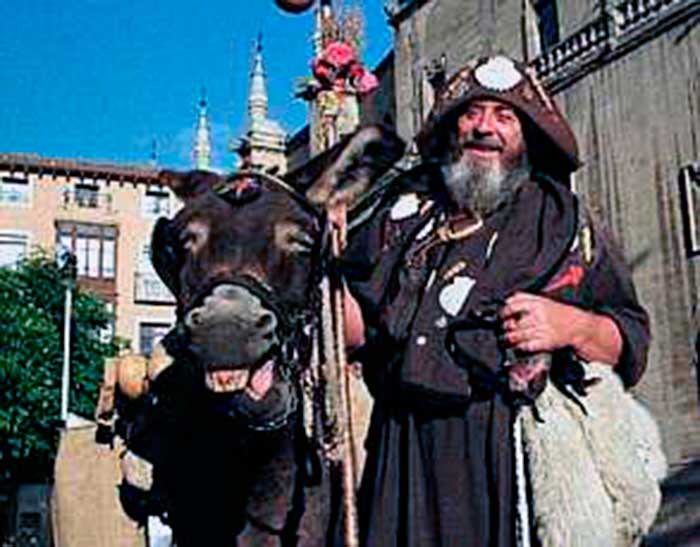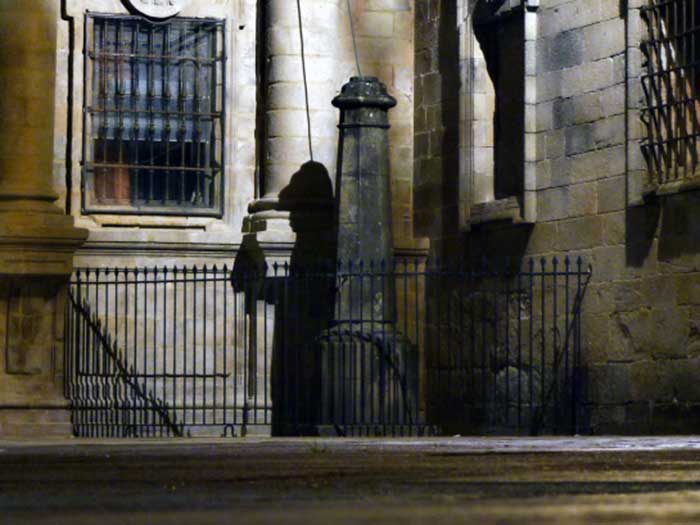We mainly know of mediaval pilgrims´ attire through a few images from some of the manuscripts that narrate the adventures or reflections of characters who walked the Camino frances. The medieval period spanned almost a thousand years – from about the 5th C to the 16th C. During the heaviest pilgrimage years in the 11th and 12th centuries, over a million people per year traveled the Camino de Santiago. The medieval pilgrim included poor peasants to wealthy knights with an enormous range of clothing and styles.

Traditionally, medieval pilgrims wore some special clothing and took some important objects, some of which were supposed that four Popes proscribed the color they usually wore was brown or black and the main clothing pieces were: sturdy shoes, a leather or woollen clad cloak, broad brimmed hats, staffs, satchels (or wallets, or scrips), strong stick with a water gourd, and badges as the scallop shell , identifying them as pilgrims on the camino of Santiago de Compostela. The gourd was empty fruit served pilgrims to carry water in medieval times. It has been a basic equipment for every pilgrim for centuries. This is the reason why eventually become a symbol of the Camino de Santiago and an inseparable image of the pilgrims.

The scallop shell has long been the symbol of the Camino de Santiago. Over the centuries the scallop shell has taken on mythical, metaphorical and practical meanings. The scallop shell also served practical purposes for pilgrims on the Camino de Santiago. The shell was the right size for gathering water to drink or for eating out of as a makeshift bowl. The scallop shell also acts as a metaphor. The grooves in the shell, which come together at a single point, represent the various routes pilgrims traveled as Camino francés, Camino primitive, Camino portugués, Via de la Plata…, eventually arriving at a single destination: the tomb of James in Santiago de Compostela.
There is a wonderful little museum in Sant Palais, the Musee de la Basse-Navarre, which includes the museum of pilgrimage established by a Dr Clemet Urruitbenhety. He has devoted most of his adult life to researching pilgrimage artifacts.
There is also an excellent museum in St Jean with ‘pilgrims‘ in medieval garb.
Even the museum in Santiago includes clothing, basket ware, agricultural implements etc thought to be typical of those used in medieval times.

Although modern pilgrims do not wear this kind of garb any more, there are some characters along the Camino who does, Marcelino Lobato is one of them. Marcelino Lobato Castrillo is a passionate St. James pilgrim and the most known personality on the Camino Frances. He is walking the Camino since 1971 and giving conferences and interviews about the phenomena and spirit of the Camino de Santiago. His outfit is according the medieval St. James pilgrimage.
Do you want to meet the oldest medieval pilgrim?
Every night in a corner under the baroque clock tower in the Plaza de la Quintana, a hunched pilgrim appears. He stands life sized, and wears the traditional garb of the religious pilgrim: cloak, broad-brimmed hat, and a staff top-heavy with a gourd for water and the traditional scallop shell, which is the symbol of the pilgrim.

Buen Camino, amigos!
Anxo Saco



Comments
Tim Eveland
Clothing for medieval pilgrims would’ve been whatever was readily accessible for them. Keep in mind a fair amount of pilgrims were nobles who had sold everything they owned to make a devout journey to Outremer where they hoped to return with even more belongings. Many of them succeeded. Others with nothing to sell, whether from Ireland to Spain or from Italy to England, expected to return with memory or nothing at all. Therefore, most pilgrims would’ve been wearing the most readily accessible fabric of their homeland, in a form that was most suitable travel.